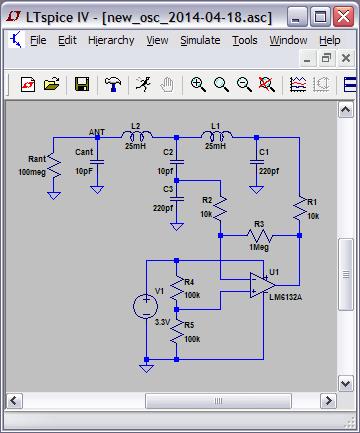Many of the circuits I've been messing with lately draw very little current, which makes me wonder how low one might possibly go in constructing an otherwise viable yet low- or micro-powered Theremin? Hams have these sorts of projects / contests, which can be both instructive and fun. And a micropowered Theremin could be easily powered by a battery, which raises the possibility of eliminating a serious noise source (wall warts are now most often switched power supplies) as well as increasing portability.
Here is a candidate ~200kHz oscillator that draws less than 1/2 mA with ~60Vp-p at the antenna (in LTSpice):

I need to bench it, but similar circuits using CMOS have worked well in the past.
The dual JFET VCA circuit over on another thread here is similarly quite low powered:

I'm thinking a supply voltage of 3.3V (+/-1.65) is a good target (maybe too low?).
No plans! Don't know where this is going, if indeed anywhere, but it's fun to think about.
[EDIT]
The goal with low powered oscillators is that they don't poop out or stall when the antenna is grasped. This can be realized with sufficient drive current / reduction in antenna voltage swing, and an insulating sleeve on the antenna doesn't hurt either.


